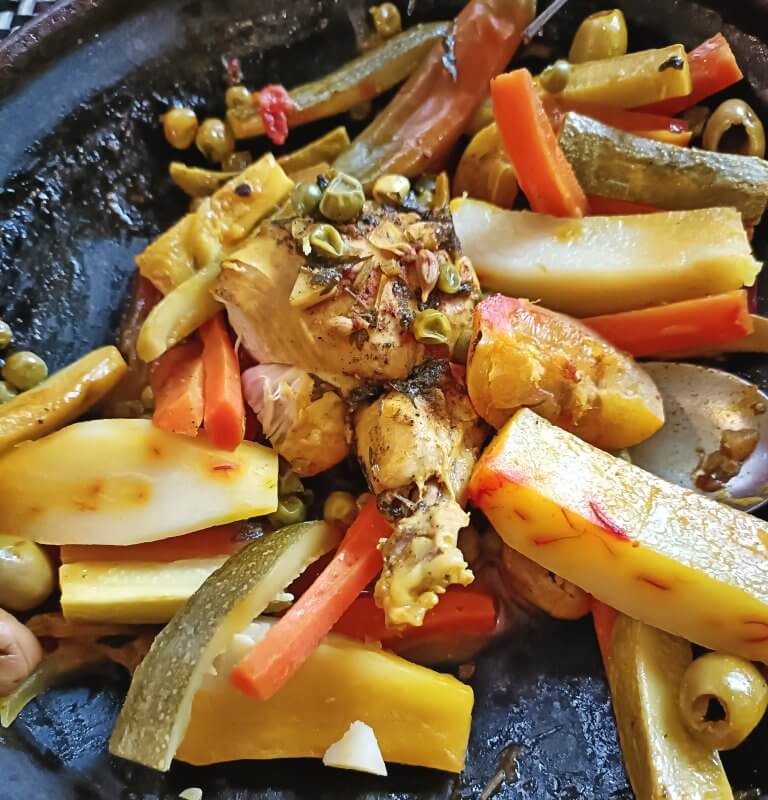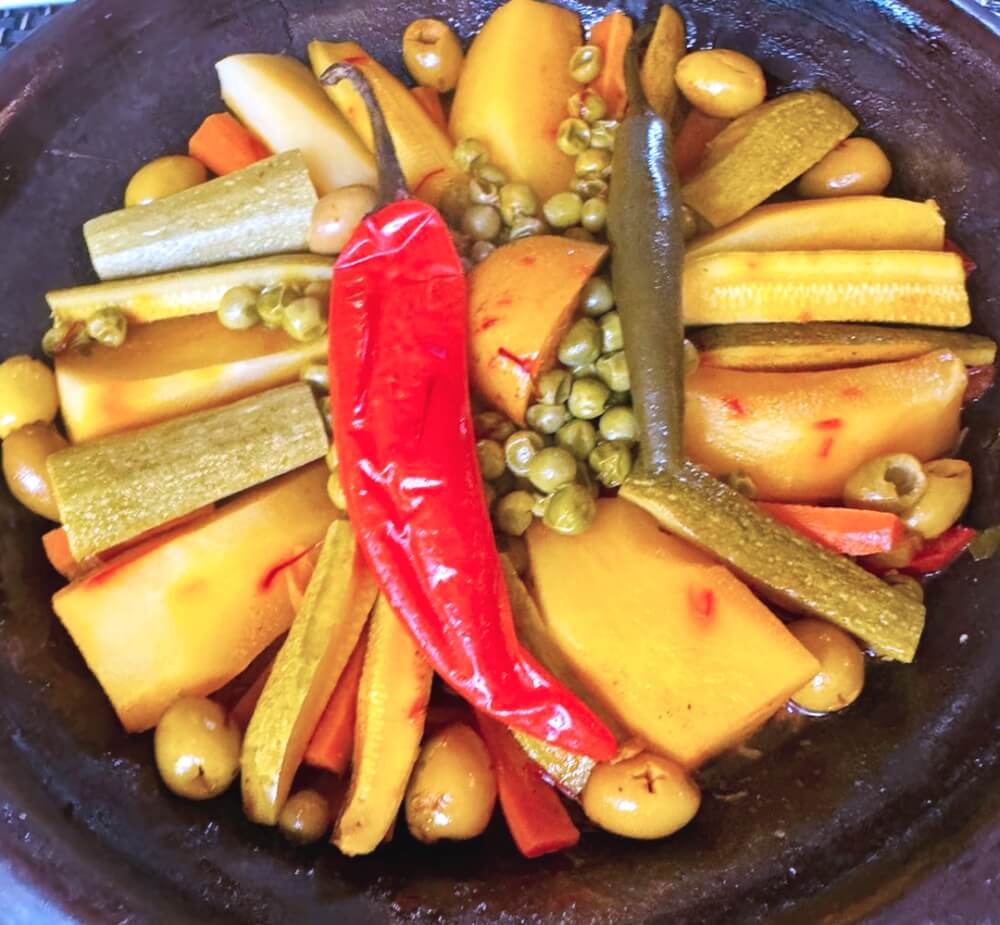
During the first 12 days of our two-week tour of Morocco, we sampled a flavorful array of Moroccan cuisine.
From the historic cities of Casablanca, Fes and Meknes, across the vast desert of the Sahara, to the villages of the Middle and High Atlas Mountains, we ate local specialties at each stop.
The main ingredients in Moroccan cooking are surprisingly simple:
Flour, vegetables, meat or fish. Sometimes cheese or butter, often olives. Occasionally dates or raisins. And, once in a while, a surprising sweetness where our Western palate would expect a savory taste.
The Moroccan flavor secret
But the secret that transforms these simple staples into something exotic is the mix of Moroccan spices used in their preparation.

Turmeric, cumin, paprika, salt, ginger, sometimes cloves or cinnamon, and occasionally the rarest and most expensive spice of all – Saffron.
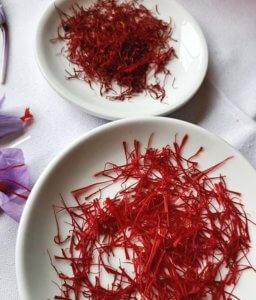
At one of the last stops on our tour, we got a chance to try our own hands at creating one of these exotic dishes.
I’m not much of a cook, but I do like to eat. So when I saw that our itinerary included a cooking class I figured I would stand by and take photos while the rest of the group prepared the food.
But I was wrong.
Little did I know that it was an ‘all hands on deck’ activity. If you didn’t cook, you didn’t eat!
Resigned to joining in the ‘fun,’ I looked forward to enjoying the finished product.
We lined up in the kitchen two by two
We sorted ourselves into pairs with cutting boards and knives, fresh ingredients, and stoneware cooking tajines set up between each pair of budding gourmet chefs.

Two of the couples swapped partners, husbands in one pair, wives in the other.
The women wanted a vegetarian dish; the guys wanted something with more heat, piling on several extra hot peppers in their dish.
Melanie and I prepared our tajine in traditional Moroccan style.
While holding up my end of the cooking chores, I still managed to sneak in a bunch of photos during the process, even when it meant I was the last cook to finish my appointed task.
An exotic dish created from simple ingredients
The simple gourmet meal was made with tomatoes, onions, garlic, zucchini, carrots, potatoes, fresh green peas, pitted green olives, fresh parsley; a skinless chicken leg, thigh and breast; a preserved lemon wedge, a fresh whole hot pepper and a couple healthy squirts of Moroccan olive oil.
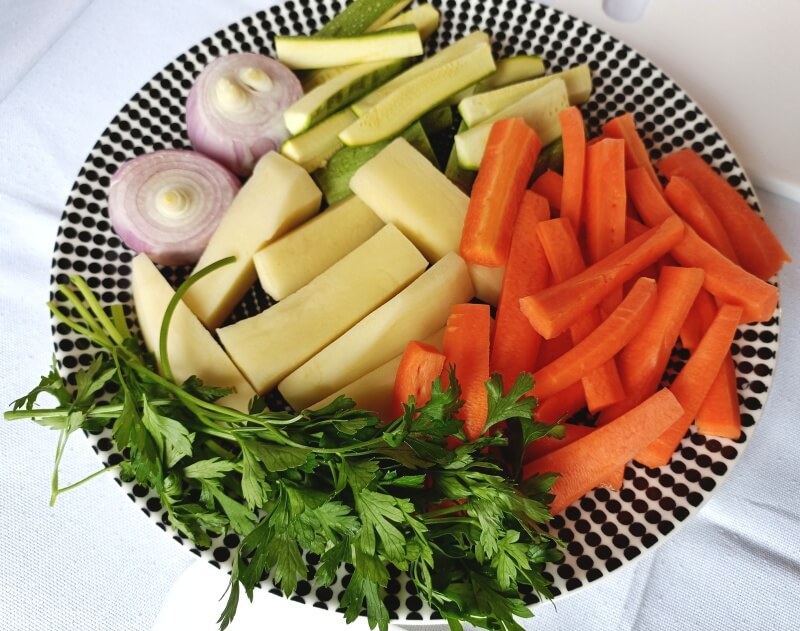
The chicken parts had been marinated overnight with lemon and salt. And the lemon wedge was preserved in salt.
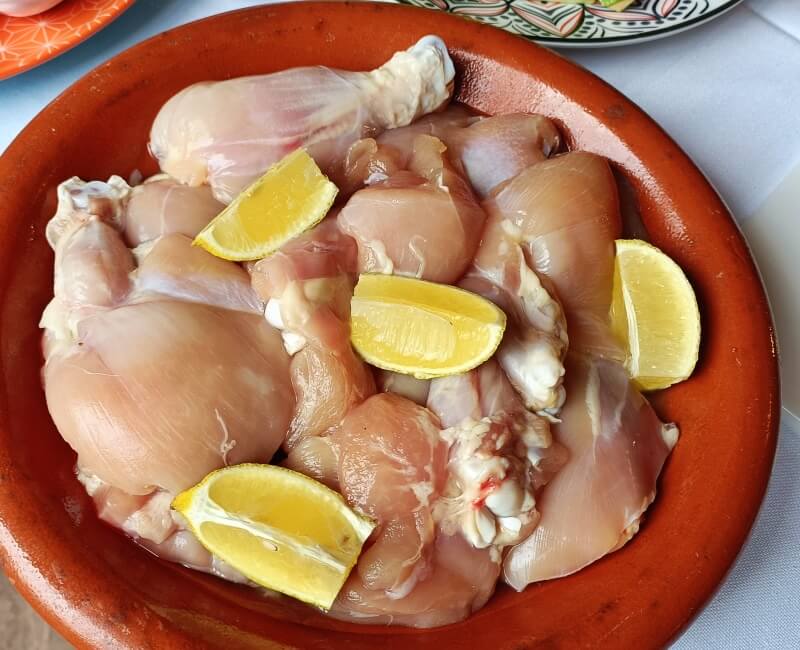
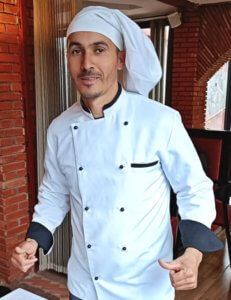
We chopped our ingredients as directed by the hotel’s master chef, Mohamed.
One by one, we layered them into the pottery dish, sliced tomatoes and chopped onions on the bottom, chicken parts on the next layer.
We then sprinkled seasonings over the top: bright orange turmeric powder, a light dusting of coarse salt, brilliant red paprika, powdered ginger, ground cumin and fresh chopped parsley.

The next step was to place precut carrot sticks, potato strips and zucchini wedges, radiating from the center of the dish, on top of the chicken parts.
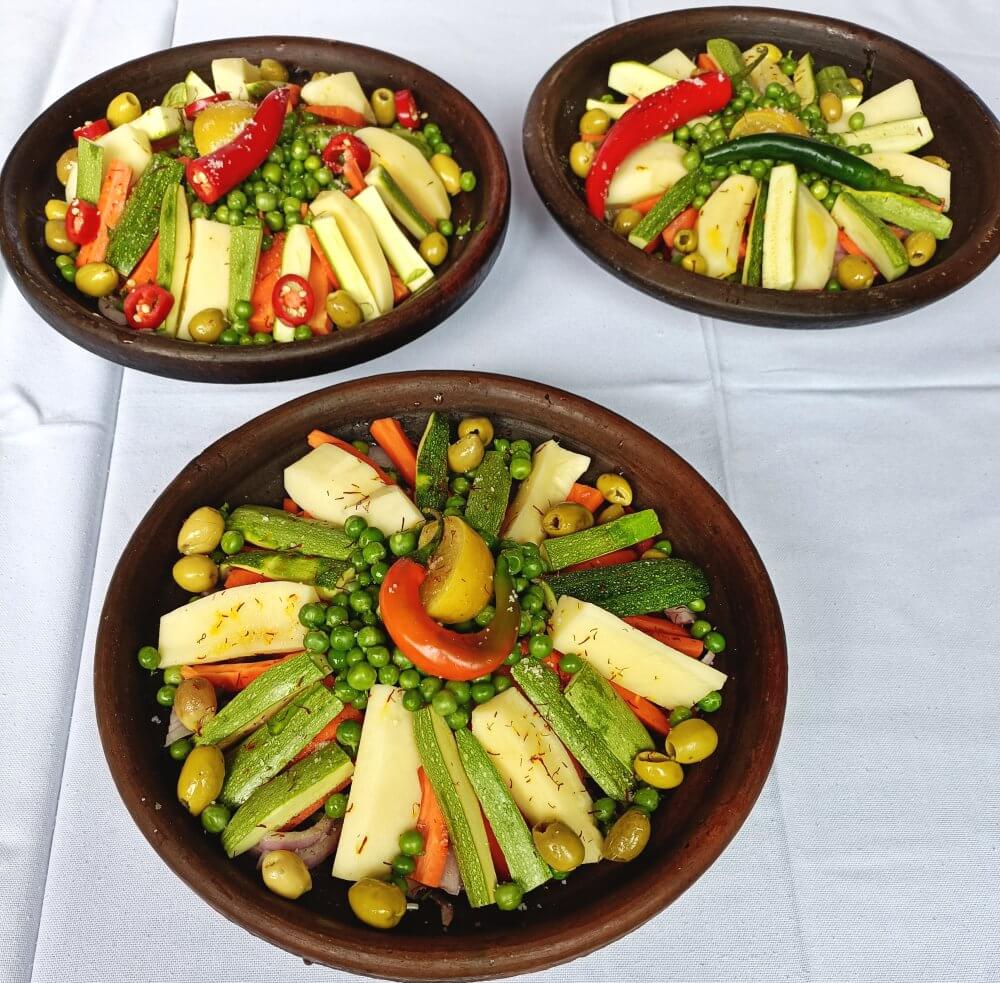
On top of that a few spoons full of fresh green peas, the preserved lemon wedge in the center and, on top, a whole fresh hot pepper.
Saffron – the rarest spice of all
The final step was to pick up a large pinch of bright red dried saffron threads and rub them between thumb and forefinger to grind and sprinkle them over the dish.
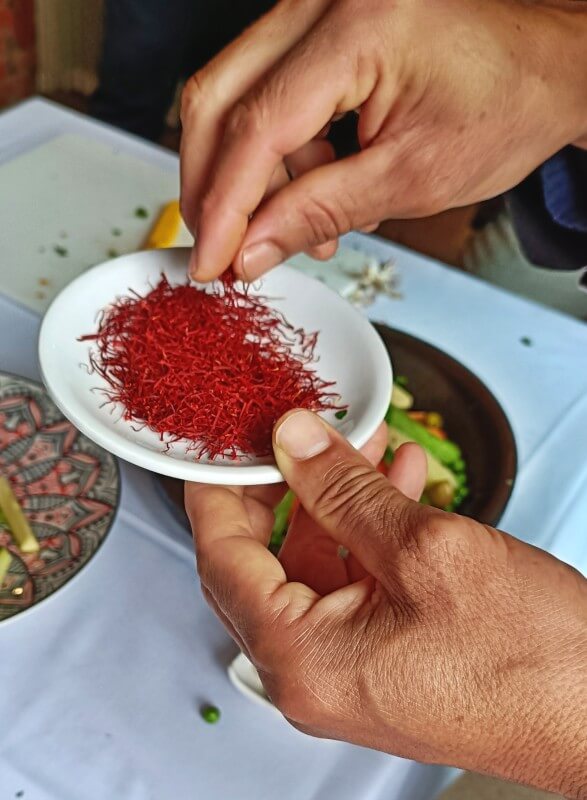
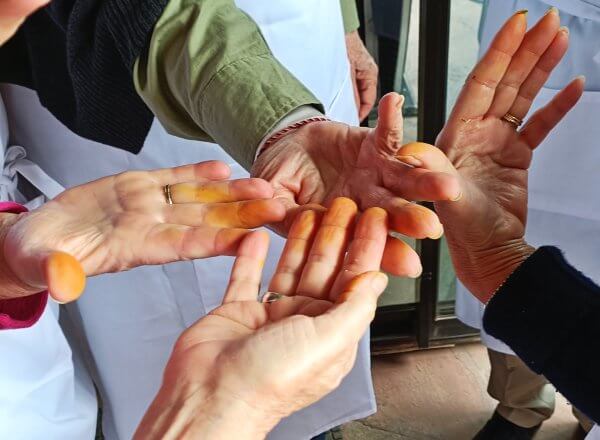
The covered tajines, each one tagged so we could tell which one was ours, were then lined up on a wood-fired brazier where they baked over glowing coals for about an hour under the watchful eye of our head chef.
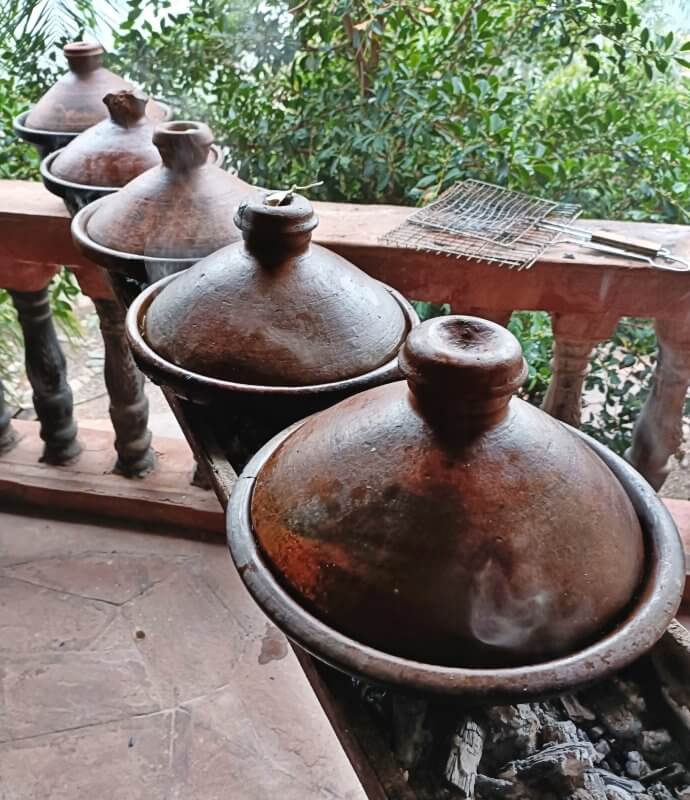
After placing the tajines to cook, we set about preparing the next part of our meal – a fresh salad of tomato, cucumber, yellow pepper and onion.
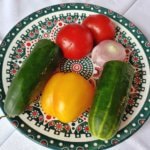
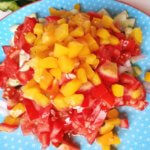
We peeled the cucumbers, cut them lengthwise into quarters and removed the seeds. Then we chopped them into small pieces along with the tomatoes, peppers and onions.
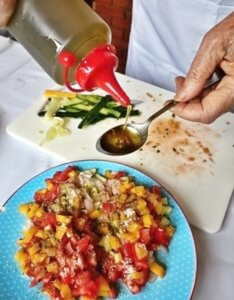
Seasoned first with a sprinkling of coarse salt and ground cumin, we ladled a few spoonfuls of olive oil over the cut veggies. After sealing our plates with clear plastic wrap, we set them aside to allow the spices to permeate the mix.
We had one more task before we could eat
While we packed our belongings for our next departure, the chef remained on duty at the fire, occasionally adding more wood or using a bellows to fan the flames. At times he added a bit more liquid to one of the tajines to keep it from baking dry.
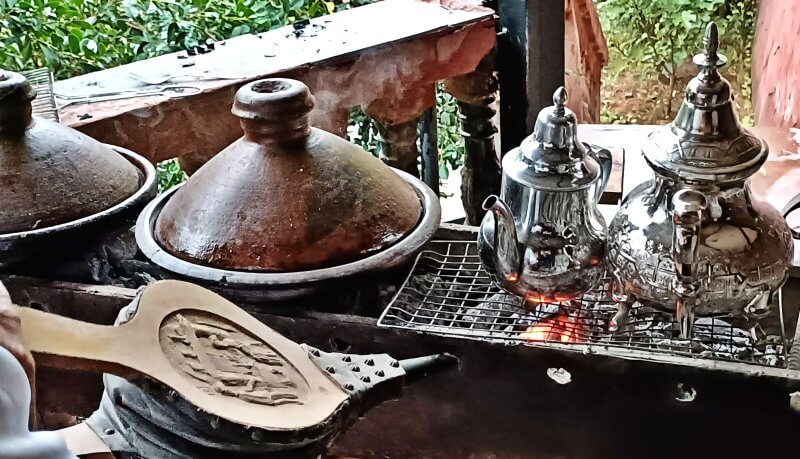
All packed and ready to go, we returned to the kitchen to enjoy our home-cooked Moroccan meal.
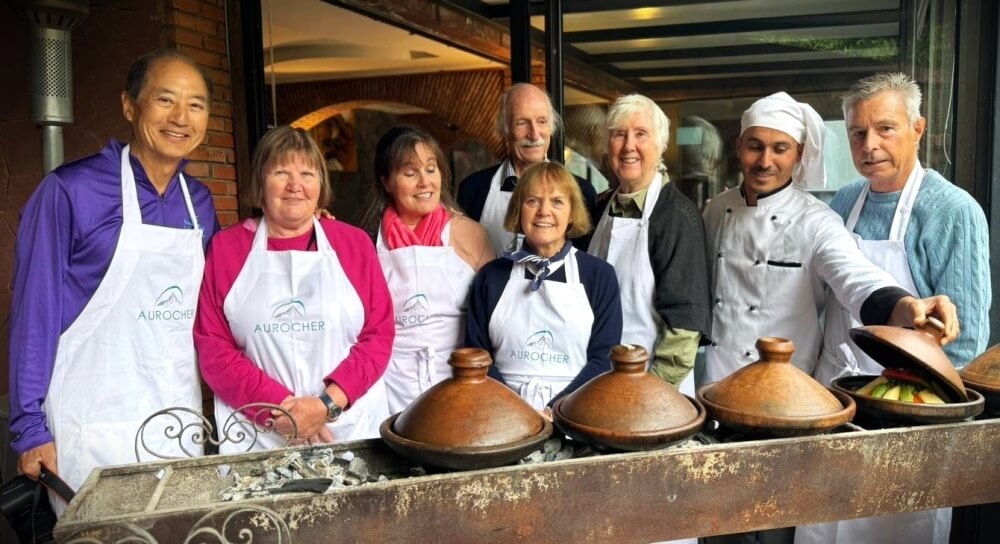
The final result?
Delicious!
In fact, on the last night of our tour, when our tour leader asked us to name the best meal we had during the prior two weeks, nearly all of us said it was the meal we had prepared ourselves!
